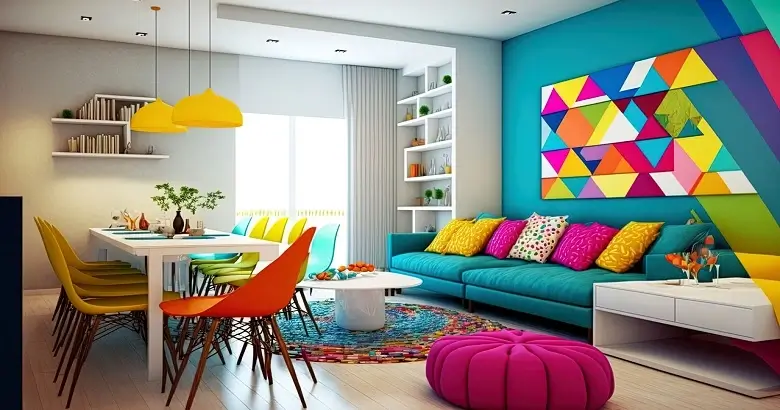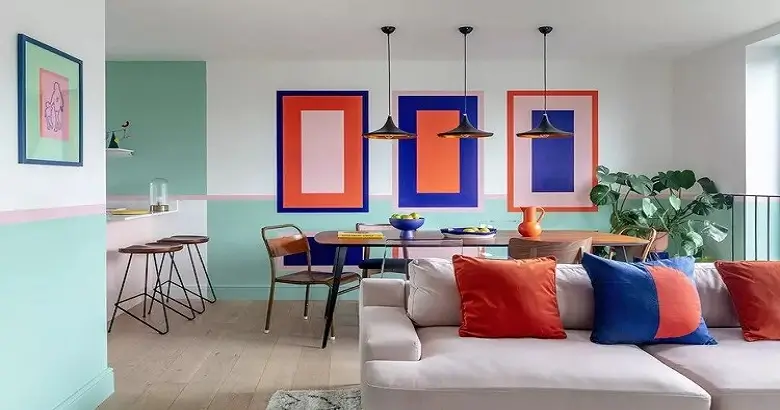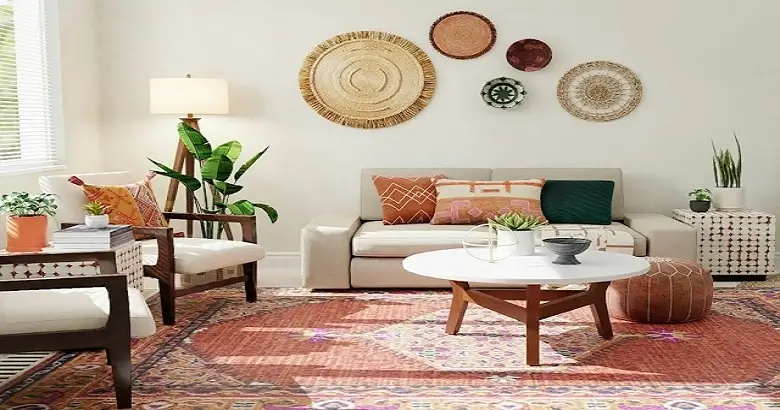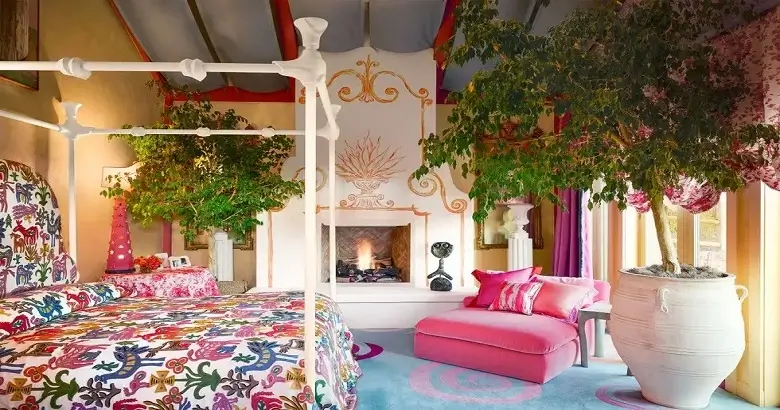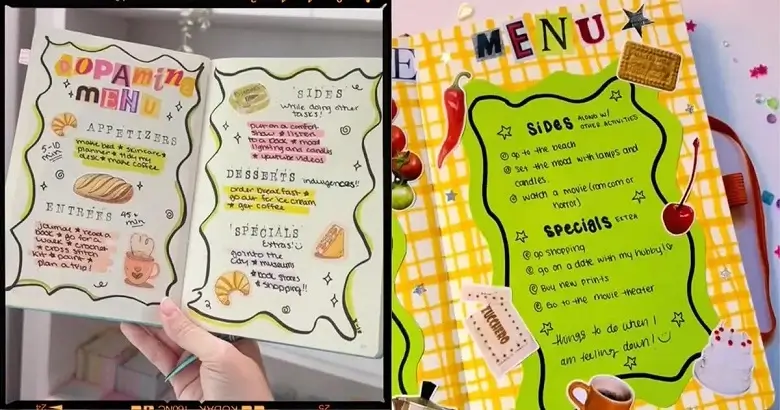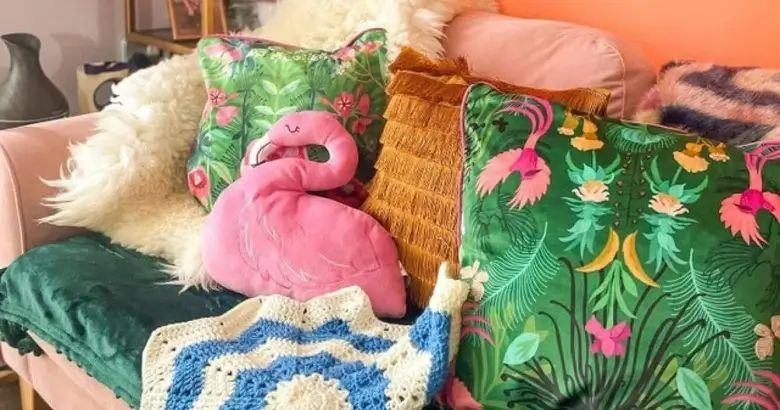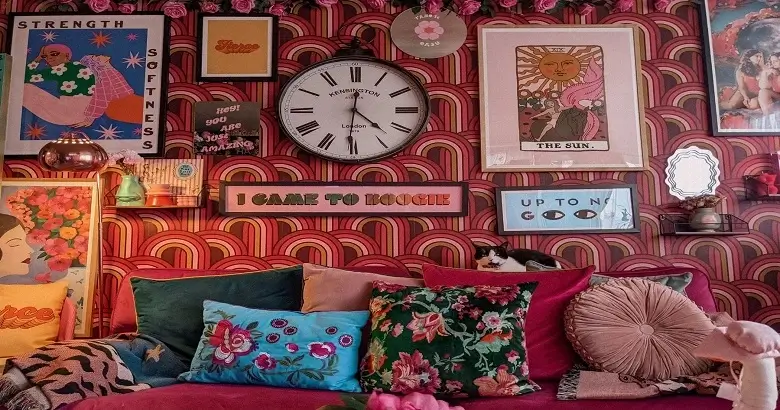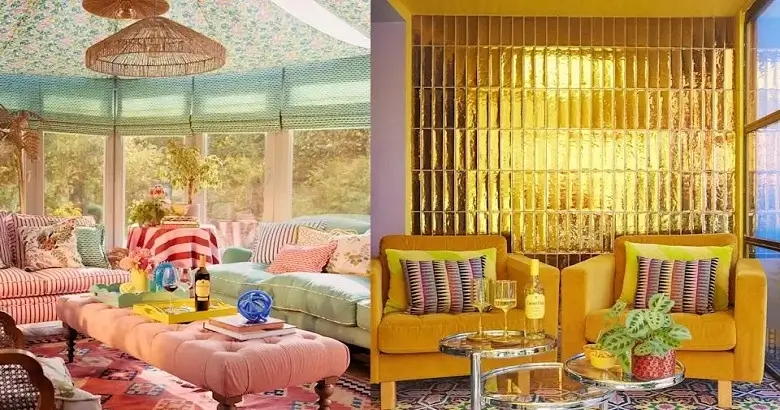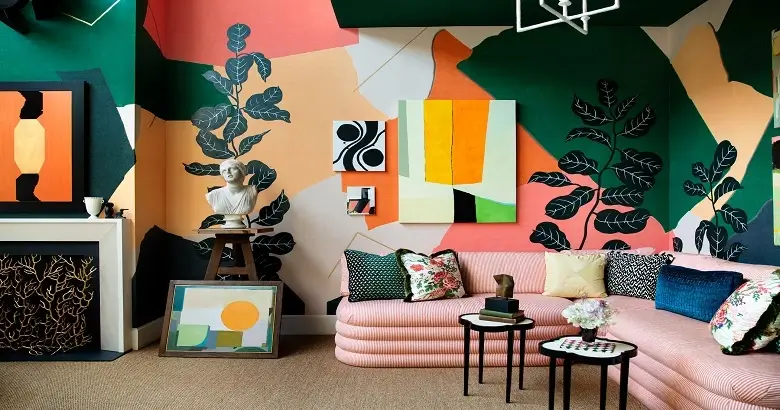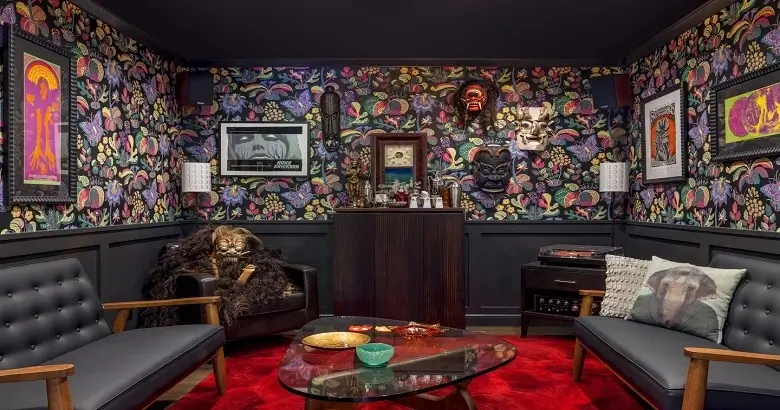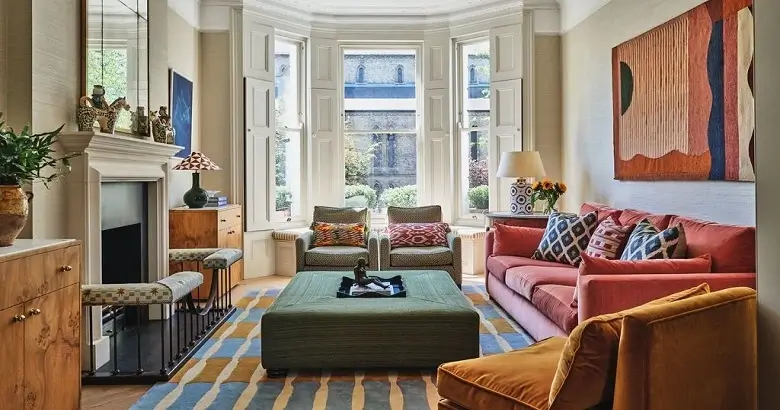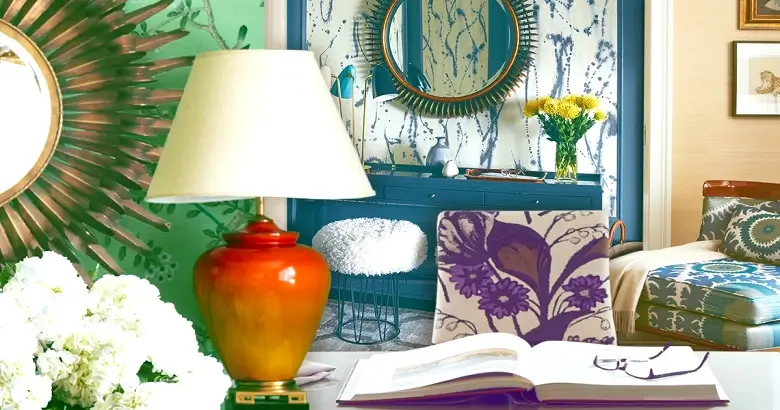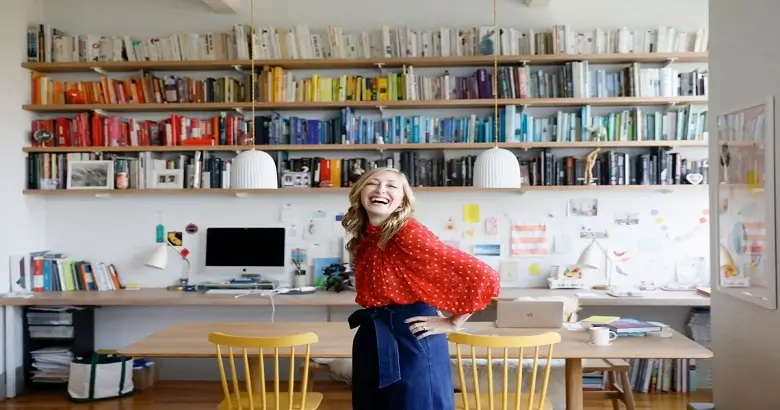At its core, dopamine decor is about designing a space that brings you instant joy on a visual, emotional, and even nostalgic level. It’s a bold, unapologetic style that prioritizes happiness over minimalism and self-expression over trends. It’s the interior design equivalent of wearing your favorite colorful outfit just because it makes you feel good.
The Heart of the Trend
The dopamine decor trend began gaining traction during and after the pandemic, when people started spending more time at home and realized how much their surroundings impacted their mental health. With traditional minimalist styles, white walls, clean lines, and neutral palettes, many began to feel disconnected from their spaces. The pendulum swung in the opposite direction: toward personalized, vibrant, feel-good interiors.
This trend takes inspiration from dopamine dressing in fashion, where people intentionally choose clothes that spark happiness, regardless of whether they’re trendy. Dopamine decor follows the same philosophy but applies it to your environment.
Key Features of Dopamine Décor
Dopamine décor isn’t about following a design rulebook; it’s about creating a space that feels like your inner joy turned outward. Below are the defining traits of this expressive, emotion-first design trend:
1. Intentional Color Saturation
Dopamine décor is unapologetically bold. Bright color palettes, like sunny yellows, lush greens, fiery reds, and playful pinks, are chosen not for visual harmony, but emotional response. Each hue has a job: to lift your mood, calm your nerves, or energize your day. Whether it’s a mint-green wall, a coral couch, or an accent chair in electric blue, color here is a psychological wellness tool, not just a pretty backdrop.
2. Personal Narrative Objects
Forget matchy-matchy. A key to this trend is layering your space with sentimental objects, vintage heirlooms, childhood drawings, travel souvenirs, or thrift-store finds that tell your story. It’s not about whether an item “goes” with the décor; it’s about the feeling it stirs every time you see it.
3. Unapologetic Maximalism
This is where maximalist patterns shine. Think loud wallpapers, stacked bookshelves, layered rugs, and overlapping prints that defy traditional taste. It’s not clutter, it’s curated abundance. Every item brings visual interest and emotional resonance, creating a space where your senses (and your soul) feel alive.
4. Playful Forms and Quirky Shapes
Wave-shaped mirrors, smiley-face cushions, checkerboard tiles, curved couches, and dopamine décor favor unexpected silhouettes that spark playfulness. Even furniture takes on an animated vibe, combining comfort with curiosity. These shapes challenge rigid design norms, inviting lightness and laughter into daily life.
5. Texture Layering
Tactile pleasure matters here. From plush velvet chairs and chunky knit throws to glossy tiles and woven baskets, textured furniture and surfaces are essential. Touch becomes part of the experience, calming, cozy, and endlessly engaging. It’s décor that literally feels good to live in.
6. Mixed-Era & Mixed-Source Styling
Why not pair a modern neon lamp with an ornate vintage mirror? Or place your grandma’s china next to a funky flea market sculpture? Dopamine décor thrives on contrast. When you blend design eras and sourcing styles, your space becomes a visual autobiography, filled with stories, contradictions, and character.
7. Statement Art (Often DIY)
Walls are canvases, not just backdrops. From oversized paintings to handmade collages and bold mural work, statement art is core to this aesthetic. And yes, DIY is welcome. Whether it’s something you painted in a late-night burst of creativity or a piece made by someone you love, it becomes a celebration of emotional expression.
8. Biophilic Touches
Plants, floral patterns, natural wood finishes, and nature-themed wallpapers offer moments of grounding. Even in rooms bursting with color and movement, biophilic elements bring in calm. A corner filled with leafy greens or a nature-inspired mural ties your joy back to the rhythms of the earth, connecting your internal state to the natural world.
9. Unexpected Design Moments
Dopamine décor delights in surprises, a glittery light fixture in the closet, a brightly patterned drawer liner, or a whimsical sculpture peeking from a shelf. These small doses of delight act like little dopamine hits, rewiring your brain to associate your home with happiness.
10. Function that Sparks Joy
Design isn’t just decorative, it’s functional joy. A window seat perfect for morning coffee, a journaling nook with a fuzzy pillow, or a record player that encourages spontaneous dance breaks, these aren’t afterthoughts. They’re strategic dopamine boosters. This is where décor meets behavior design, shaping how you move, rest, and recharge.
